After making noise for years, today Intel is making its mark in the GPU market with the Intel Arc line. This is a big deal for the industry since it marks a third entrant. It also means that Intel will win some portion of the market using additional manufacturing capacity and therefore help lower supply constraints on GPUs further. Intel has decided to launch first with its mobile GPUs. That makes sense since it can leverage its Evo and other platforms to bundle CPUs, GPUs, and other technology, plus validate experiences. Let us get into what Intel is announcing.
Welcome Intel Arc GPUs to the Market
While some may say Intel is entering the GPU market, that is not entirely accurate. Let us be clear, Intel powers many of the world’s systems with its integrated graphics, so this is really a re-entry into the dGPU market and going head to head with AMD and NVIDIA. We are saying re-entry since STH readers tend to be of more advanced years, and therefore probably remember some of the technology Intel had two decades ago (or more.) Still, the world has changed and now Intel is back with Arc, Xe, and its Alchemist line.
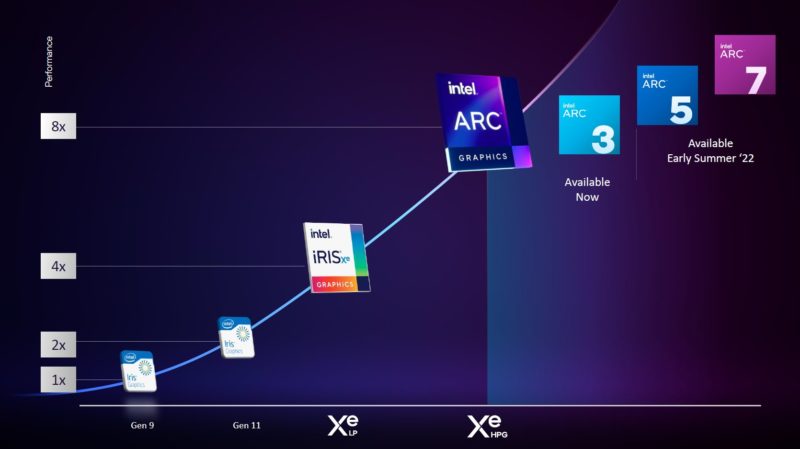
Unlike a startup in the space, Intel has scale, the ability to bundle with platforms, and a giant software team so it is worth taking Intel seriously. Intel is moving ahead with a family of GPUs, and the first in this space are the mobile GPUs it is calling Arc 3, Arc 5, and Arc 7. That leads one to guess that someday we could have a Core i7 with an Arc 7 or perhaps a Core i3 with an Arc 5.
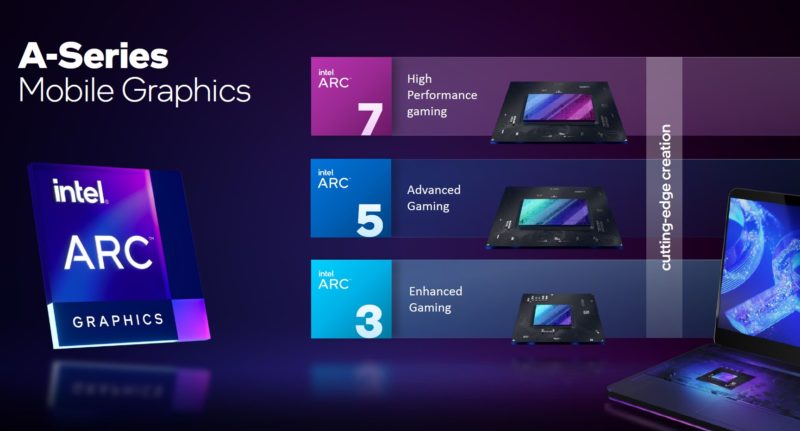
Here are the launch SKUs with the A350M and A370M being the Arc 3 options, the A550M being the Arc 5 option, and the A730M and A770M being the higher-end Arc 7 options.
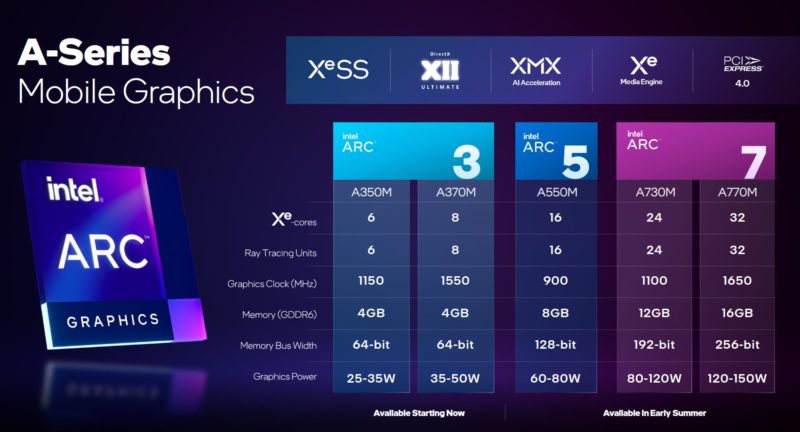
One quick note here on clock speeds. The way Intel is defining the “graphics clock” is that it is the average point that the part is running at along a voltage/ frequency curve. So this is not a boost clock, nor a max turbo clock, but an average of what the chip will run at on a specific test load. That also means that OEMs can offer higher clocked versions of the GPUs by pushing power and cooling allowing for higher average clocks.
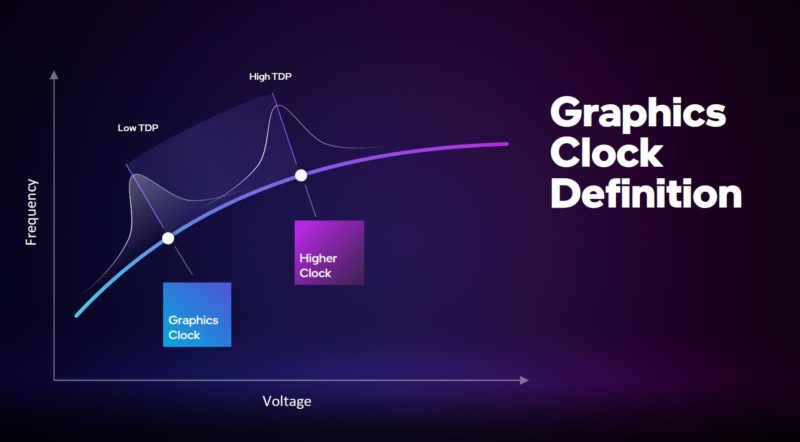
Here are the overall specs for the A-series both at the top-end with ACM-G10 as well as the lower-end ACM-G11.
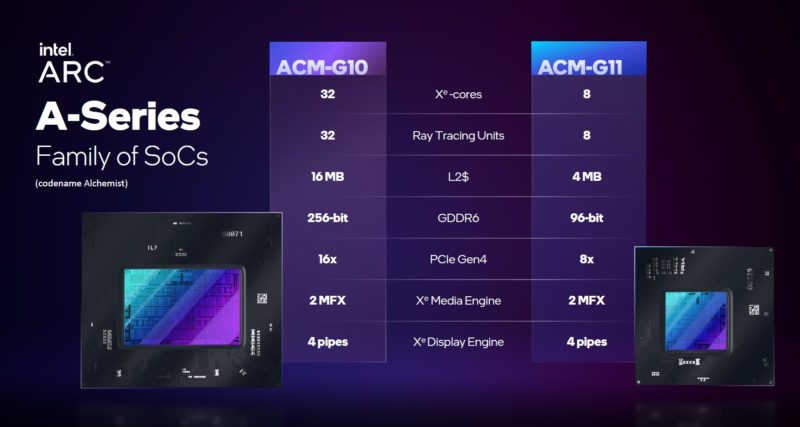
While we are saying these are for notebooks, one of the more interesting nuggets is the top right of the notebook vendor slide. There we see Intel NUC. I asked yesterday, and while there is not a formal announcement, I would expect an Intel Arc NUC (NUC Arc?) to be a future product.
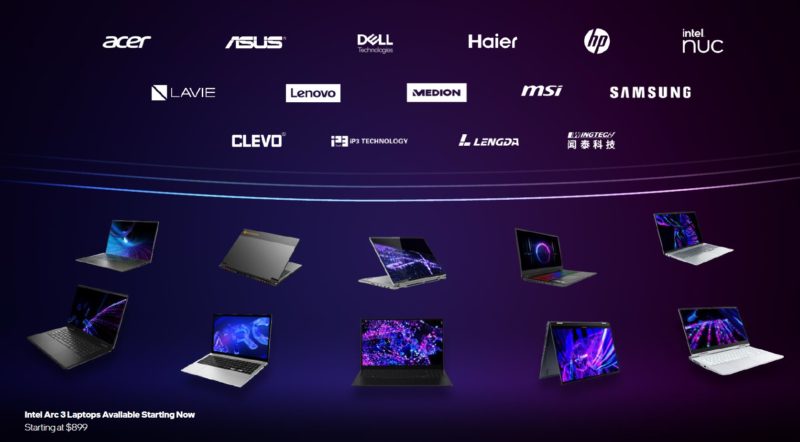
With that, let us get to the architecture that makes these chips.
Intel Xe HPG Overview
The Intel Xe HPG has the company’s compute cores, but there is more. Intel is also focused on accelerators for media encoding/decoding as well as AI inferencing. If you saw our piece AWS EC2 m6 Instances Why Acceleration Matters, then the reason behind using accelerators should be familiar.
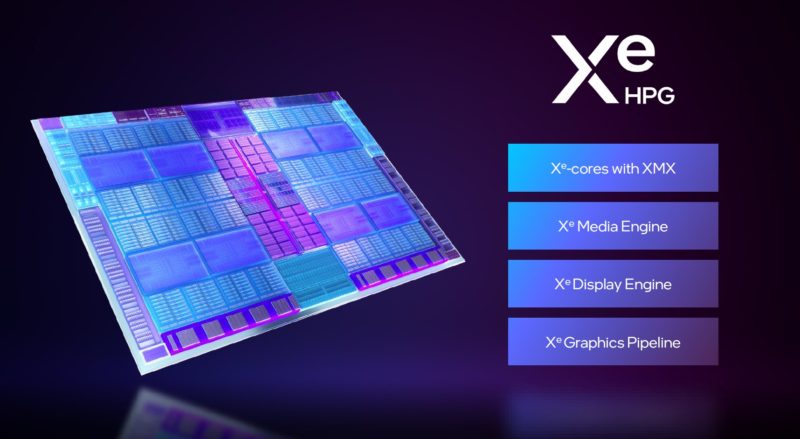
The big feature of the Xe HPG architecture is the render slice. This has all of the main compute power to deliver the GPU experience. That includes hardware ray tracing acceleration for DX12 Ultimate.
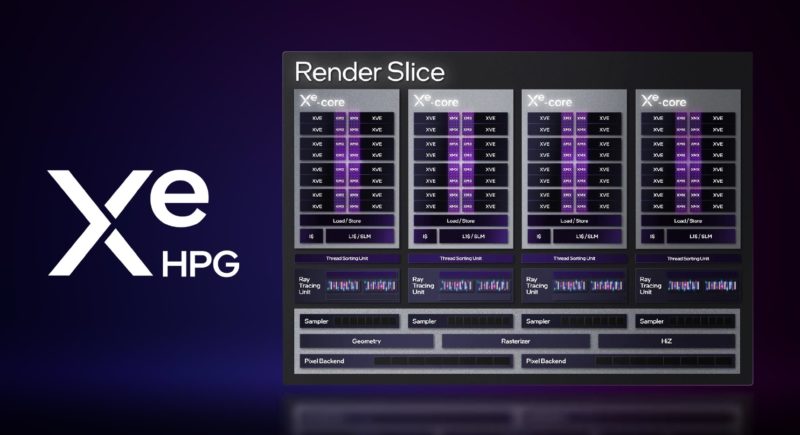
Intel has a modular approach, so a GPU can scale to multiple render slices to add more performance. In this iteration, we can get up to eight render slices.
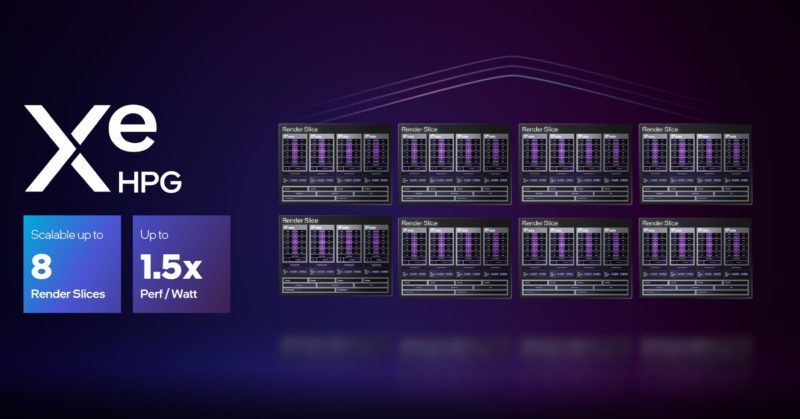
The Intel Xe core has 16x 256-bit vector engines and 1024-bit matrix engines. There is also a 192KB cache that can be configured to either act as a L1 cache or be used as a memory depending on the workload.
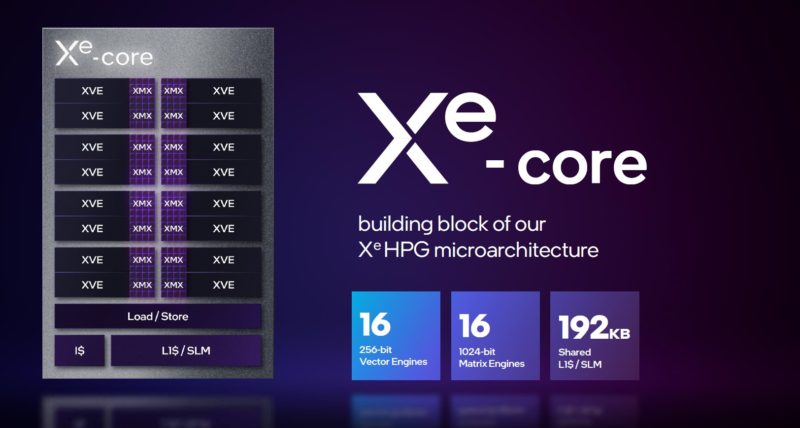
The Intel Xe vector engine will do 16x FP32 ops/ clock, doubling for FP16, and again doubling for Int8.
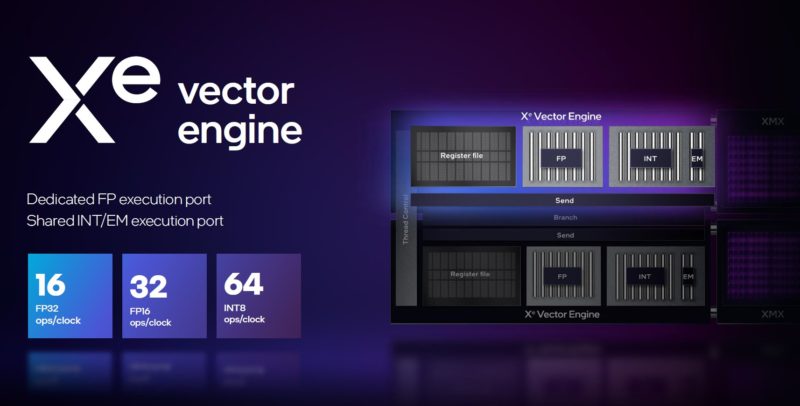
The Matrix engine is called the XMX matrix engine. This is what Intel is using for its AI acceleration. While some may assume AI acceleration does not make sense in a notebook GPU, that is not the case. Modern GPUs, including Intel Arc, can render at lower resolutions then upscale using inference to increase performance (e.g. Intel XeSS.) Also, other applications like creative applications and even video conferencing (background blur) are using inference more often these days, so this is a feature that Intel saw as mandatory.
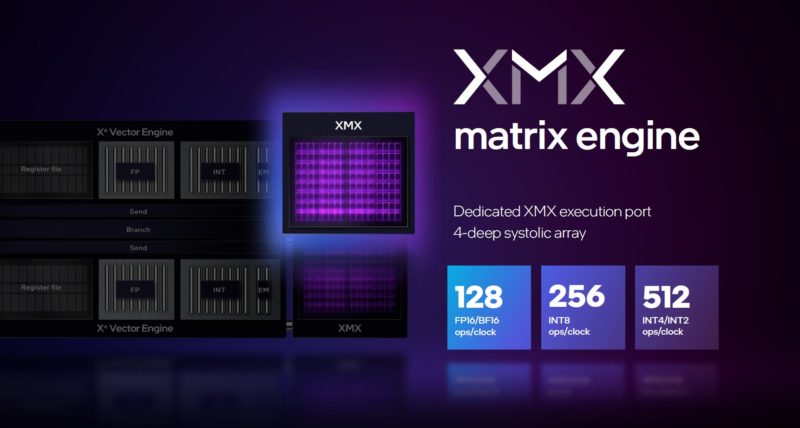
That is not to be confused with MMX which brought us multi-colored bunny suit plush dolls back in the day.

The XMX is basically a huge MAC that can do up to 16x the operations on INT8. We are seeing companies like Intel and NVIDIA realize they can take a primary type of computation and build huge compute engines to boost performance.
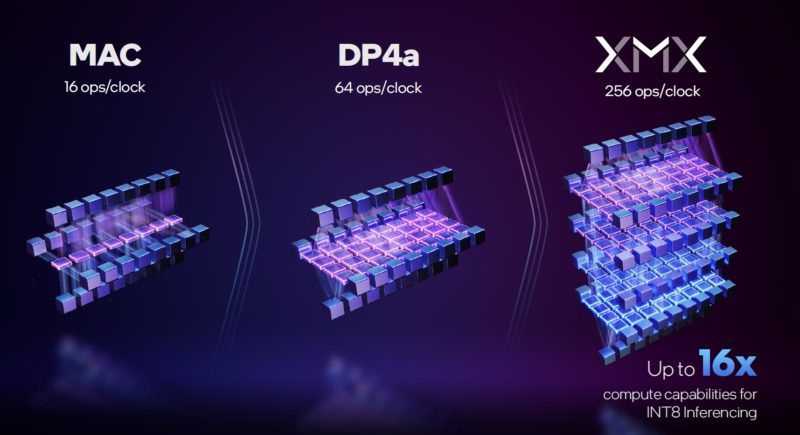
The Intel Xe HPG engine is set up in pairs in the Xe Core.
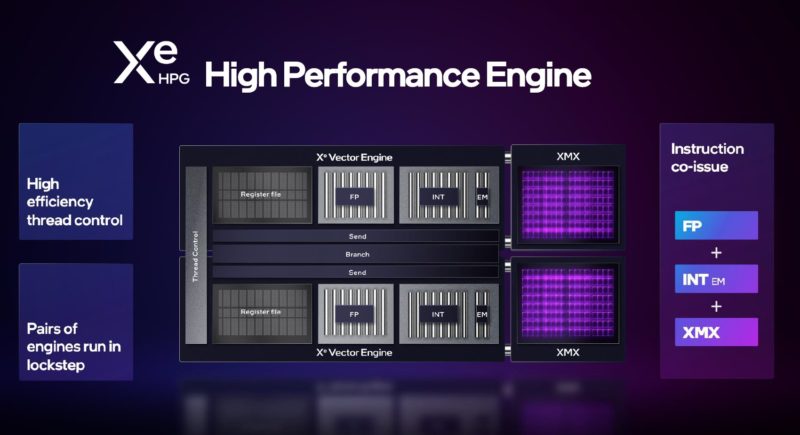
Beyond the Xe core, we also wanted to note the Xe media engine. Intel is supporting encode/ decode of VP9, AVX, HEVC, and even AV1. This acceleration has huge impacts for folks that work with video but also can lower power consumption for AV1 playback.

The Intel Xe display engine can support up to two 8K 60fps or 4x 4K 120fps displays.
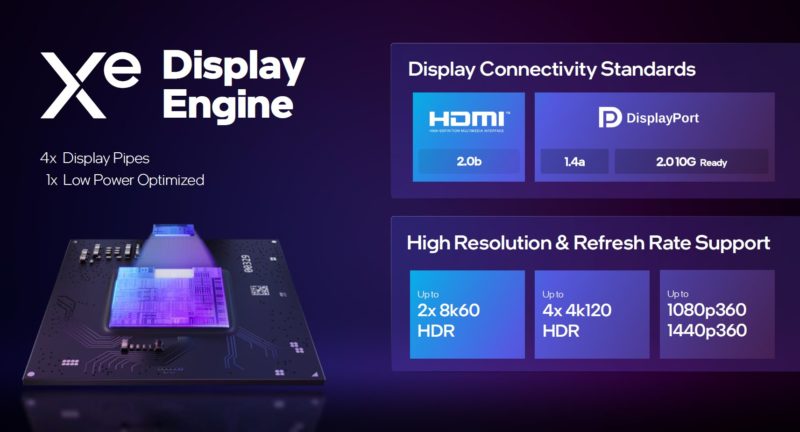
For graphics, Intel also has not just Adaptive Sync, but also Speed Sync and Smooth Sync. Smooth Sync blends the tears from v-sync being turned off on fixed refresh monitors to make things look less jarring.
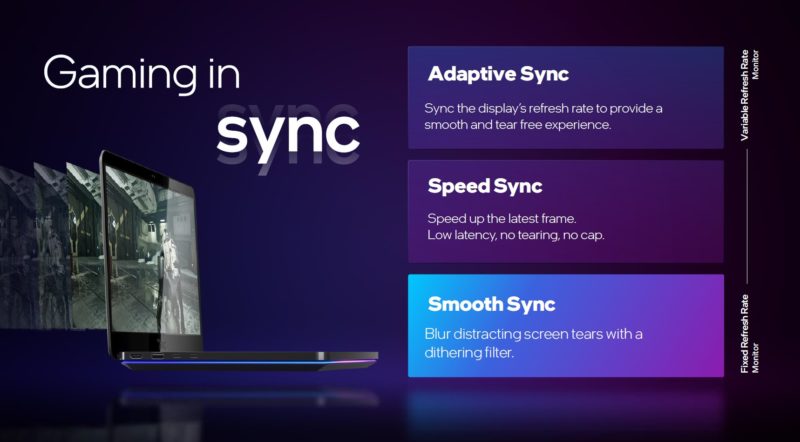
We are not going into gaming performance, but even using the higher-end Arc 3 GPU, one can get more performance on the creator side. We are just going to quickly note here that Intel is comparing Intel Arc 3 to iGPU performance here.
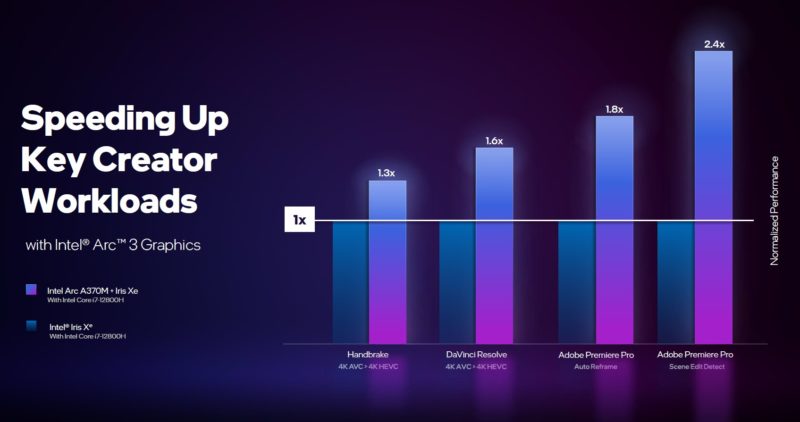
Next, let us get to some of the platform features that help to package Arc for systems.
Intel Arc Platform
Intel is launching Arc in the notebook segment. That means Intel is able to assume that there is an Intel CPU and Arc GPU and offer Deep Link.
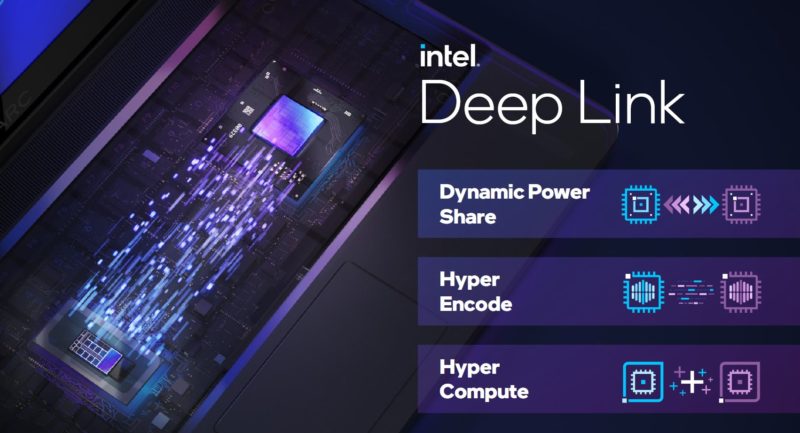
Deep Link has the ability to balance power between the CPU and GPU in a system.
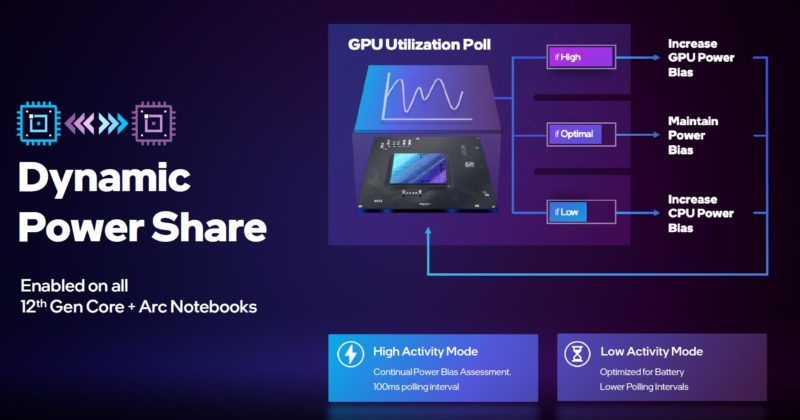
Hyper Encode allows the system to utilize both the iGPU and dGPU for encoding tasks.
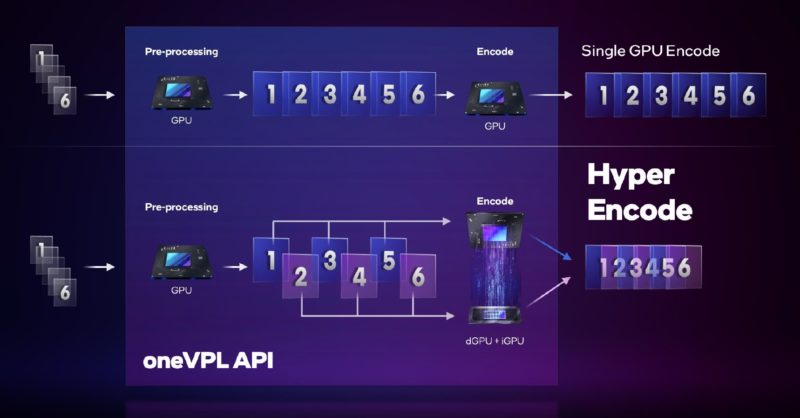
On the compute side, Hyper Compute allows the use of the CPU, iGPU, and dGPU to work on tasks like vision.
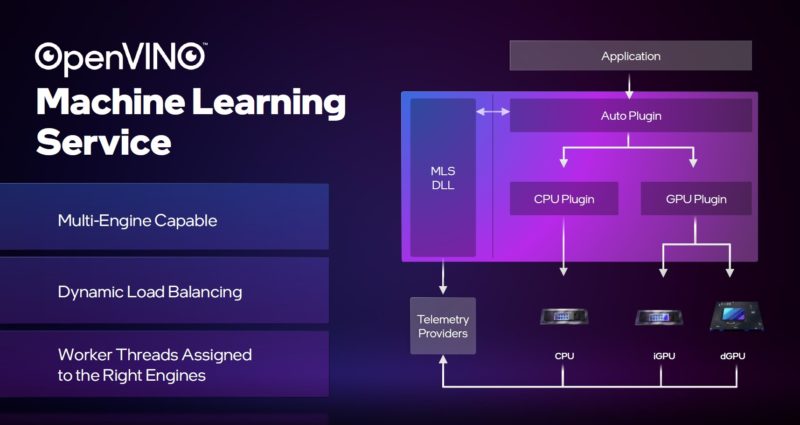
As a quick aside here, this is really a great diagram to show what Intel’s vision for future systems is. Intel is building OneAPI, OpenVINO, and other tools to specifically allow applications to ask for tasks to happen, then Intel’s software finds the best silicon in a system to run that task on. It may seem trivial but think about this scaling to larger workstations or servers. The reason we are focusing so much on accelerators is that it will be the way future in the industry.
Final Words
Intel is investing big money in the GPU, so there is a good chance we are going to see decent adoption in the notebook segment. To us, Arc feels a bit like a first-gen product (Intel i740 and iGPU notwithstanding.) We also need to see the performance of Arc in the PCIe dGPU market to see how the first generation compares with NVIDIA and AMD.
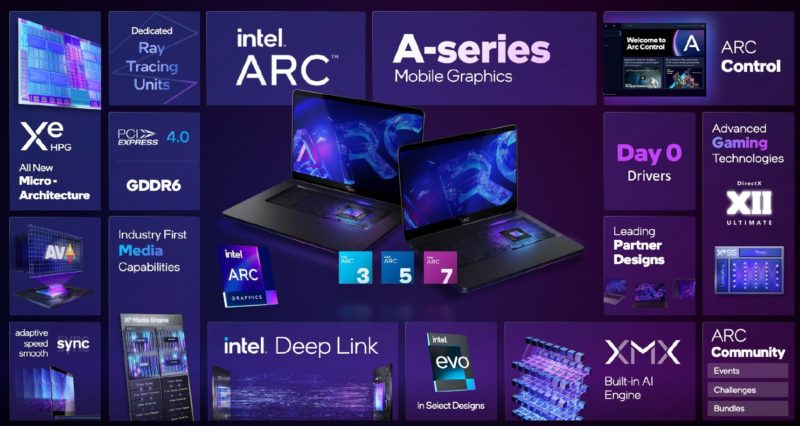
Still, having a third vendor is important for the desktop market. For the workstation and server market, Intel is further ahead in understanding the needs of software and AI acceleration than AMD is at this point, so this may be the first GPU line to offer a suitable alternative to NVIDIA for AI inference.

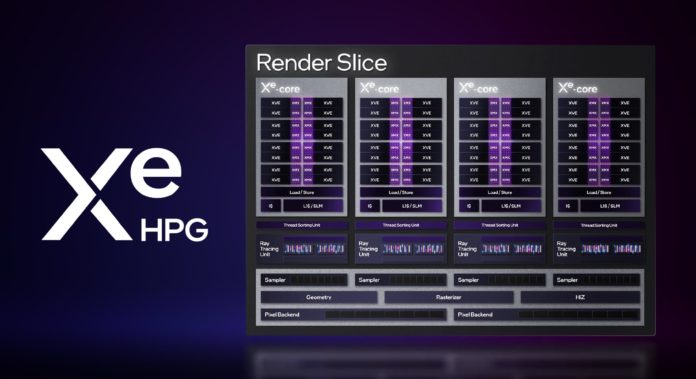



I was always a bit annoyed with the premium Notebooks/Mobile Workstations having an NVidia GPU that I don’t need (and can’t use unless I install the proprietary Linux drivers). At least having an Intel GPU would allow me to make use of it occasionally.
@Nils it is extremely annoying, especially from a battery standpoint. My work 17″ ZBook has less endurance unplugged than my 13″ Intel MacBook Air. For very niche use cases, a dGPU makes things better, for most it does not. A pity that end users can’t have more control about these things in most organizations.
@Steffen: I usually disable the dGPU altogether with bbswitch so it shouldn’t use any power at least. Doesn’t change the fact that I still had to pay for it.
The Alder Lake based Dell XPS are a good example of this problematic approach, if you want an i7 or i9 you automatically also have to pay for an RTX 3050 Ti. I’m free in what hardware I buy but it seems one always has to compromise.
Let´s see; from a hardware perspective it can be very good. But the driver part is as important. Back in the day of the Intel i740 AGP card, the software part didn´t turn out so well, hopefully Intel learned from that lesson.
I thought intel was using TSMC fabs for these, so I don’t see how that frees up supply for others.